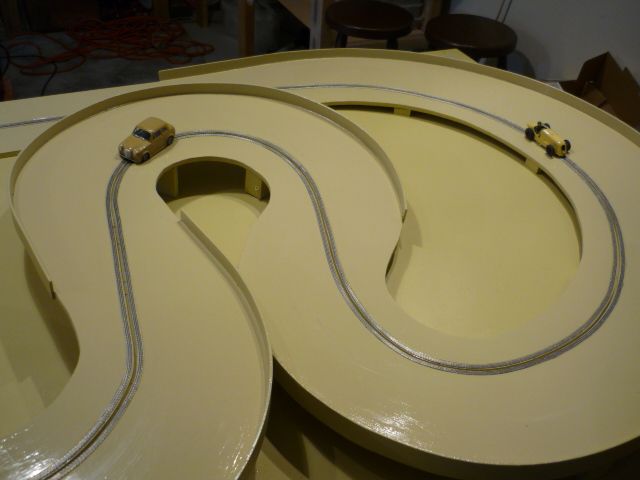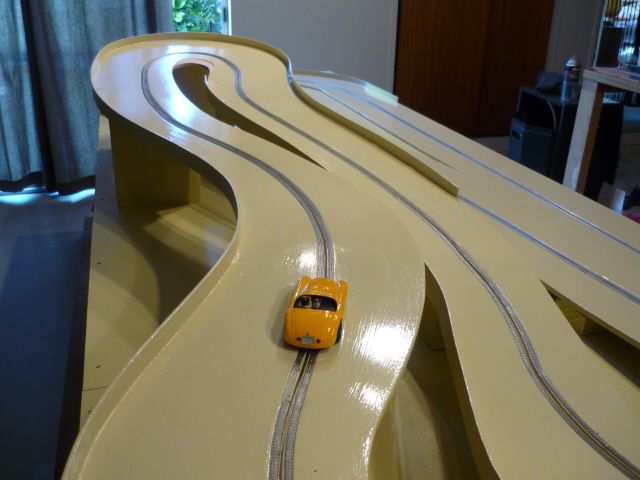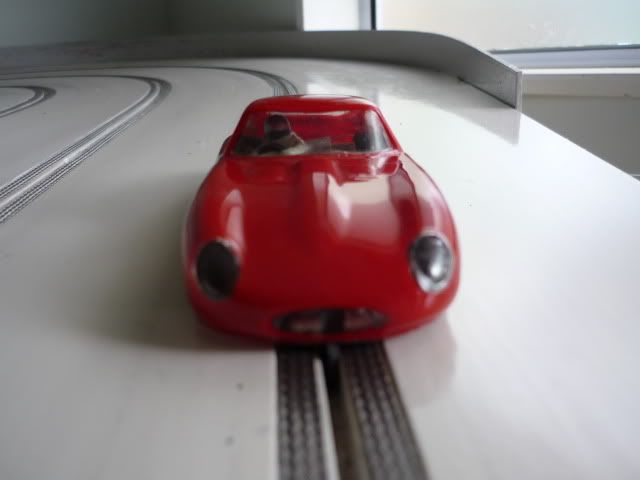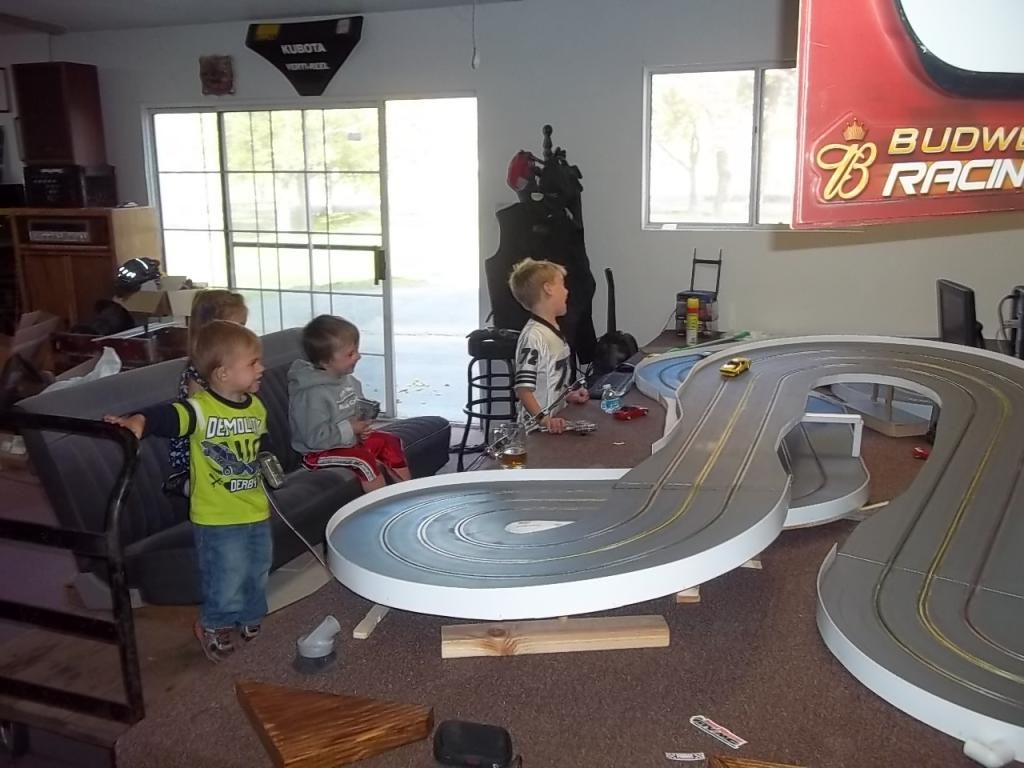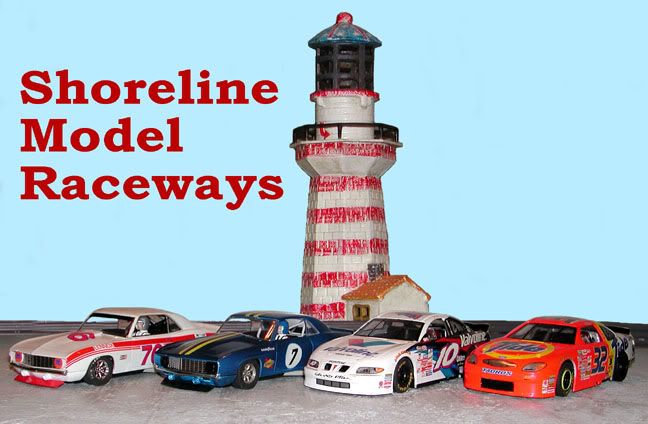Racing, crashes, and repairs
Several posts have mentioned hard racing, rubbing, and thrashed cars. My interest is what are the circumstances in which cars are damaged and what occurs.
On my paperclip 4' x 14' oval I managed to damage a few guide flags and guide tongues when cars deslotted going into a turn and rammed the board at the end of the table. When I added a 1 1/2" retaining wall using PVC molding around the curves this ended because cars were now glancing off the wall and not making head-on contact. Cars rarely leave the racing surface since adding the curved outer retaining wall. The few times cars have made the dreaded trip to the floor have been when drifting or fishtailing cars made rear wheel contact and one of them was launched over the retaining wall. The only real problem area is the front straight where a catch fence would be in the way for putting cars on the track.
When home built cars have hit the (wood) floor the most common damage is to motor mounts or rear axles mounts of cars with styrene chassis. My printed paper bodies have survived just fine.
On my new road course several cars took the dive to the floor when I couldn't resist racing on it before having any sort of walls or barriers. Thankfully, the only damage has been having rear axles pop out of their RTR chassis sockets, and one cracked rear axle tab (which holds the bushing in place). Once again, the reason I haven't added a 6"-9" catch fence so cars can't (shouldn't?) leave the table is because it would inhibit reaching for cars on the track.
What are others' experiences with walls, fences, and car damage?
Slothead
On my paperclip 4' x 14' oval I managed to damage a few guide flags and guide tongues when cars deslotted going into a turn and rammed the board at the end of the table. When I added a 1 1/2" retaining wall using PVC molding around the curves this ended because cars were now glancing off the wall and not making head-on contact. Cars rarely leave the racing surface since adding the curved outer retaining wall. The few times cars have made the dreaded trip to the floor have been when drifting or fishtailing cars made rear wheel contact and one of them was launched over the retaining wall. The only real problem area is the front straight where a catch fence would be in the way for putting cars on the track.
When home built cars have hit the (wood) floor the most common damage is to motor mounts or rear axles mounts of cars with styrene chassis. My printed paper bodies have survived just fine.
On my new road course several cars took the dive to the floor when I couldn't resist racing on it before having any sort of walls or barriers. Thankfully, the only damage has been having rear axles pop out of their RTR chassis sockets, and one cracked rear axle tab (which holds the bushing in place). Once again, the reason I haven't added a 6"-9" catch fence so cars can't (shouldn't?) leave the table is because it would inhibit reaching for cars on the track.
What are others' experiences with walls, fences, and car damage?
Slothead
